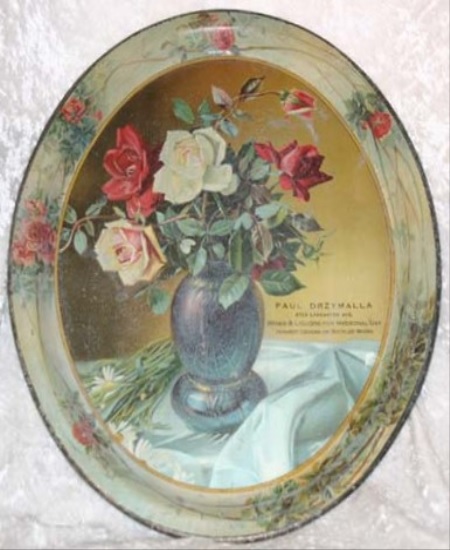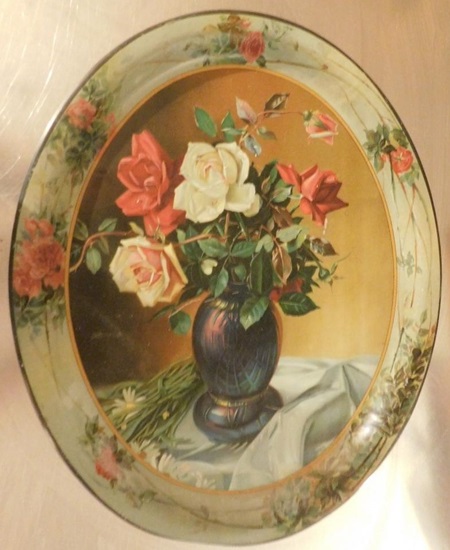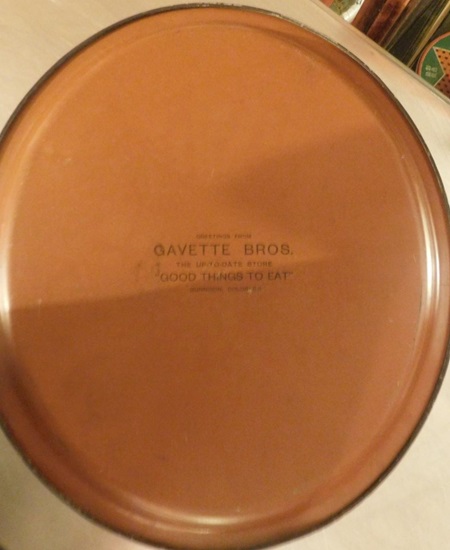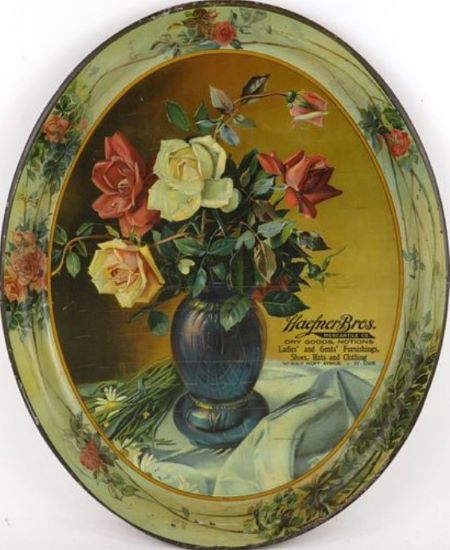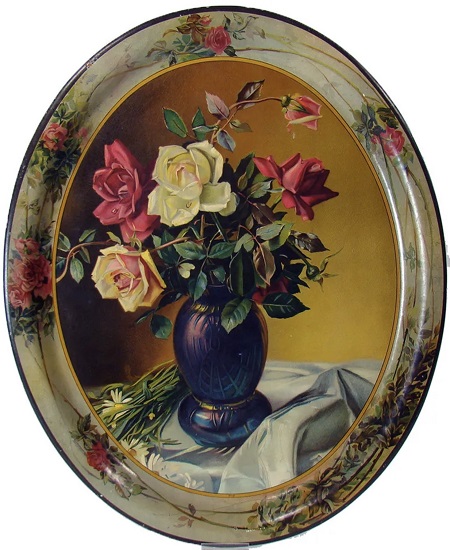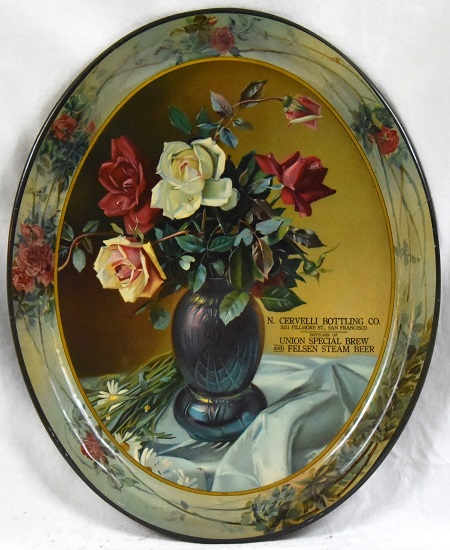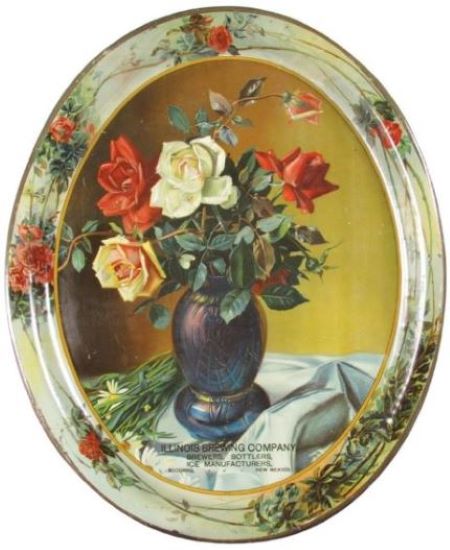Carnival glass originated as a glass called 'Iridill', produced beginning in 1908 by the Fenton Art Glass Company (founded in 1905). Iridill was inspired by the fine blown art glass of such makers as Tiffany and Steuben, but did not sell at the anticipated premium prices and was subsequently discounted. After these markdowns, Iridill pieces were used as carnival prizes.
Iridill became popular and very profitable for Fenton, which produced many different types of items in this finish, in over 150 patterns. Fenton maintained their position as the largest manufacturer and were one of very few makers to use a red colored glass base for their carnival glass. After interest waned in the late 1920s, Fenton stopped producing carnival glass for many years. In more recent years, due to a resurgence in interest, Fenton restarted production of carnival glass until its closure in 2007.
Iridill became popular and very profitable for Fenton, which produced many different types of items in this finish, in over 150 patterns. Fenton maintained their position as the largest manufacturer and were one of very few makers to use a red colored glass base for their carnival glass. After interest waned in the late 1920s, Fenton stopped producing carnival glass for many years. In more recent years, due to a resurgence in interest, Fenton restarted production of carnival glass until its closure in 2007.
The 'Stock' Exchange
H.D. Beach Co. No. 10-B - Dark Vase & Roses Still Life
H.D. Beach Co. No. 10-B - Dark Vase & Roses Still Life
Date: 1902 - 1905
Size: 13.5" x 16.5"
Type: Inverted Pie
Scarcity: Uncommon
Value: $$ to $$$$
Condition & Brewer Dependent
Size: 13.5" x 16.5"
Type: Inverted Pie
Scarcity: Uncommon
Value: $$ to $$$$
Condition & Brewer Dependent
Click the Picture to Return to Meek & Beach Stock Catalog Page


Confirmed Brewer used Stock Trays
Non-Beer Related & Non-Tray Uses
General Comments
More than any of its major competitors Beach did a lot of still life designs, particularly in the early years, with this design being a fairly “standard” one for the genre. A still life is a work of art depicting mostly inanimate subject matter, typically commonplace objects which are either natural (food, flowers, dead animals, plants, rocks, shells, etc.) or man-made (drinking glasses, books, vases, jewelry, coins, pipes, etc.). With origins in the Middle Ages and Ancient Greco-Roman art, still-life painting emerged as a distinct genre and professional specialization in Western painting by the late 16th century and has remained significant since then.
One advantage of the still-life artform is that it allows an artist much freedom to experiment with the arrangement of elements within a composition of a painting. Still life, as a particular genre, began with Netherlandish painting of the 16th and 17th centuries, and the English term still life derives from the Dutch word stilleven. In the artistic world, still life occupied the lowest rung of the hierarchy of genres but has been extremely popular with buyers. The trompe-l'œil painting (which seems to have been an American Art Works specialty), which intends to deceive the viewer into thinking the scene is real, is a specialized type of still life, usually showing inanimate and relatively flat objects.
Early Beach trays (both stock and non-stock) tend to have more elaborate designs than competitors and stock designs often featured leaf or vine patterns. In some cases, like on this design, they mirrored the theme of the design on the main face of the tray. Many of these rim designs were used on more than one design, including non-stock trays, which was unusual among the main manufacturers.
More than any of its major competitors Beach did a lot of still life designs, particularly in the early years, with this design being a fairly “standard” one for the genre. A still life is a work of art depicting mostly inanimate subject matter, typically commonplace objects which are either natural (food, flowers, dead animals, plants, rocks, shells, etc.) or man-made (drinking glasses, books, vases, jewelry, coins, pipes, etc.). With origins in the Middle Ages and Ancient Greco-Roman art, still-life painting emerged as a distinct genre and professional specialization in Western painting by the late 16th century and has remained significant since then.
One advantage of the still-life artform is that it allows an artist much freedom to experiment with the arrangement of elements within a composition of a painting. Still life, as a particular genre, began with Netherlandish painting of the 16th and 17th centuries, and the English term still life derives from the Dutch word stilleven. In the artistic world, still life occupied the lowest rung of the hierarchy of genres but has been extremely popular with buyers. The trompe-l'œil painting (which seems to have been an American Art Works specialty), which intends to deceive the viewer into thinking the scene is real, is a specialized type of still life, usually showing inanimate and relatively flat objects.
Early Beach trays (both stock and non-stock) tend to have more elaborate designs than competitors and stock designs often featured leaf or vine patterns. In some cases, like on this design, they mirrored the theme of the design on the main face of the tray. Many of these rim designs were used on more than one design, including non-stock trays, which was unusual among the main manufacturers.
A closer look at the vase reveals a pattern that looks something like a spiderweb, which caused us to consider the vase more carefully. It appears to be “carnival glass” which is molded or pressed glass to which an iridescent surface shimmer has been applied. The name Carnival glass was adopted by collectors in the 1950s as items of it were sometimes given as prizes at carnivals and fairgrounds. However, evidence suggests that the vast majority of it was purchased by households to brighten homes at a time when only the well-off could afford bright electric lighting, as its finish catches the light even in dark corners. From the beginning of the 20th century, carnival glass was mass-produced around the world, but largely and initially in the U.S. It reached the height of its popularity in the 1920s, though it is still produced in small quantities today.
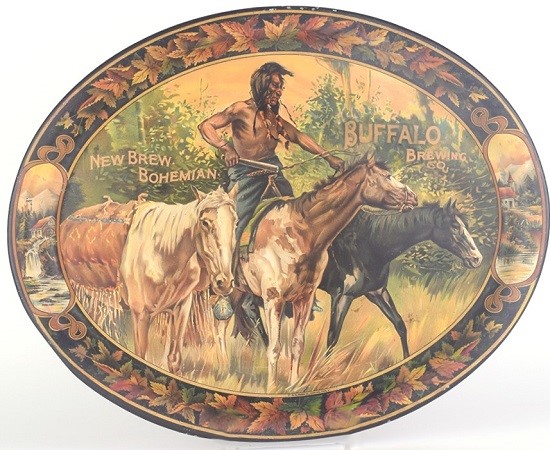
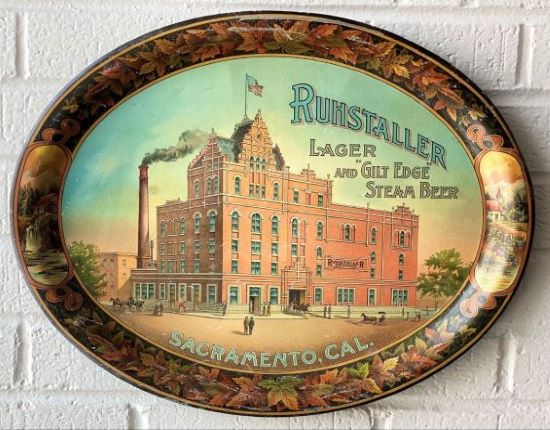
Stock
Non-Stock
Size, Shape and Message Placement
All examples of this design that we have seen have been oval trays. Because of the elaborate rims on early Beach stock trays, advertising text usually appears somewhere on the face of the tray or printed on the back. In most cases with this design the advertising text appears in black either below the vase or just to the right. One notable exception is the example from Neef Bros Brewing of Denver which is printed in red to the right of the vase. The large print forced the orientation to be vertical instead of the typical horizontal.
Hager & Price
In his article, Hager focused far less on the H.D. Beach designs than the Meek/American Art Works part of the catalog, so far fewer are discussed or included in his picture catalog. None are included in his date of introduction table. This design is not discussed, but is pictured in his catalog as '10-B.' The few brewery examples have gone for mid-three figures for better than average examples. Affiliated industries, such as bottlers have also achieved similar three figure prices, but stock samples and small retailers rarely exceed double figures except for the nicest examples.
All examples of this design that we have seen have been oval trays. Because of the elaborate rims on early Beach stock trays, advertising text usually appears somewhere on the face of the tray or printed on the back. In most cases with this design the advertising text appears in black either below the vase or just to the right. One notable exception is the example from Neef Bros Brewing of Denver which is printed in red to the right of the vase. The large print forced the orientation to be vertical instead of the typical horizontal.
Hager & Price
In his article, Hager focused far less on the H.D. Beach designs than the Meek/American Art Works part of the catalog, so far fewer are discussed or included in his picture catalog. None are included in his date of introduction table. This design is not discussed, but is pictured in his catalog as '10-B.' The few brewery examples have gone for mid-three figures for better than average examples. Affiliated industries, such as bottlers have also achieved similar three figure prices, but stock samples and small retailers rarely exceed double figures except for the nicest examples.
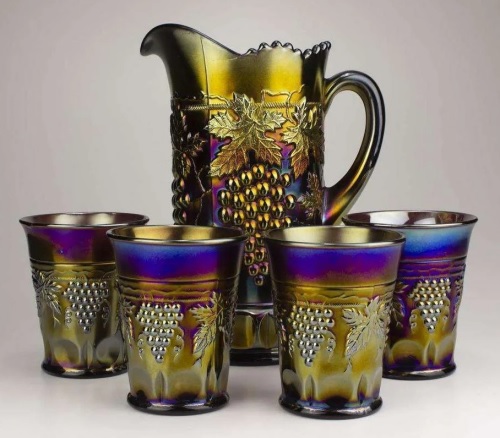
'Iridil' - Carnival Glass


